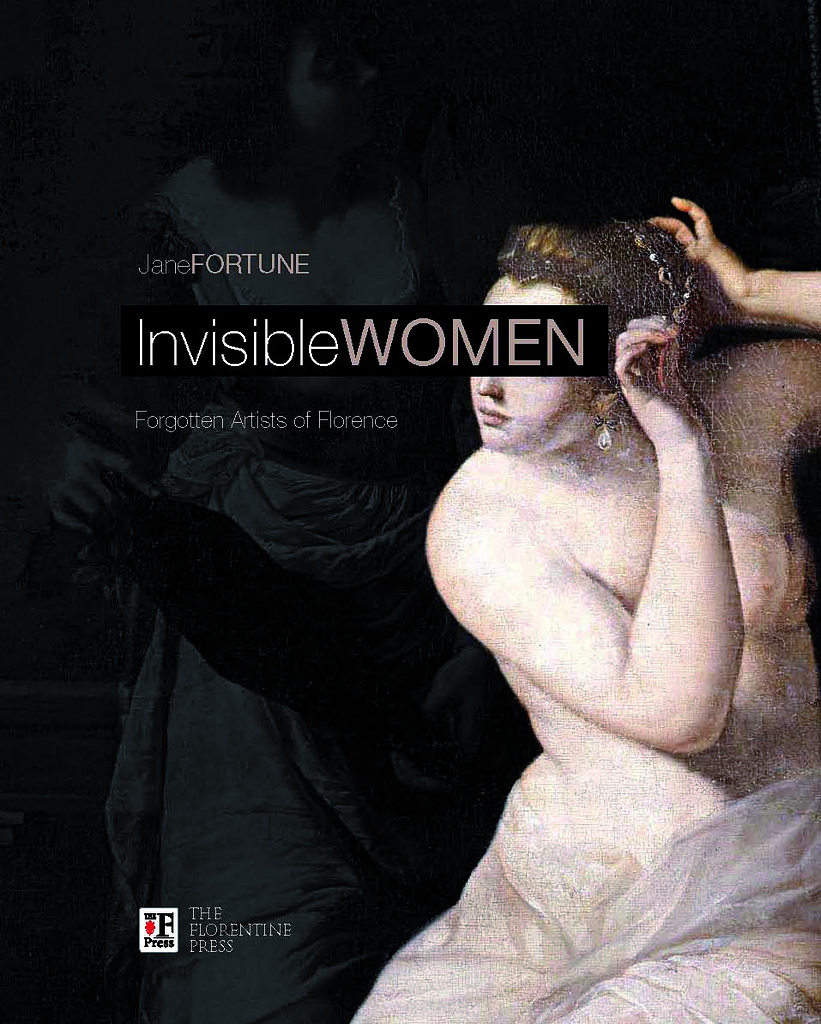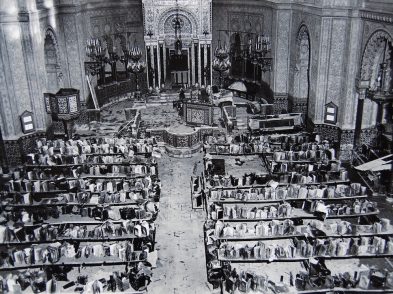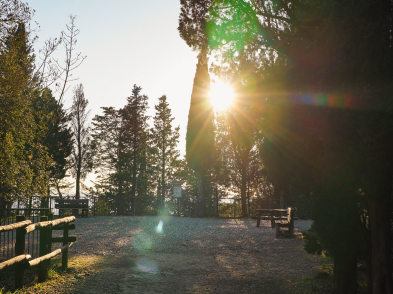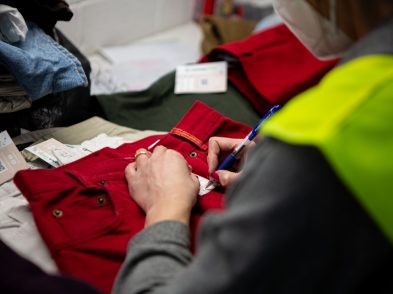Invisible Women – the new book by Jane Fortune – is an expression of love for the female artists of Florence’s past. Jane Fortune has dug through the archives of the Florentine museums in search of women’s names and their works, which are often in storage and away from the public eye. We learn that Florence conceals a dark and dusty world of female artists who, throughout the centuries, were born here or came here from Venice, Rome or from as far away as England, and who left works in the Medici and the state collections. In this lavishly illustrated volume, we are invited to learn about these women’s lives, see some of their paintings and discover the works on our own by following the ‘Women Artists’ Trail,’ a map at the end of the book.
Fortune emphasizes that she is not an art historian or a scholar but an art lover, collector and philanthropist. Like the artists about whom she writes, Fortune finds her voice and communicates her ideas in an approachable manner. Likewise, the design and layout of the book by Marco Badiani and Leonardo Cardini is suited to a general audience. In this way, the greatest possible number of readers may become aware of Florence’s overlooked female artists and their paintings. Despite Fortune’s claims not to be a scholar, Invisible Women is impeccably researched and contains valuable resources for further scholarship, thus inviting art historians to expand upon the work begun by Fortune or extend her method to other cities or countries.

Invisible Women
The book’s 26 short chapters might better be termed ‘articles’ as they are approximately the length of a feature news item. They are gathered into six thematic sections (plus the introduction and conclusion). Most of the chapters provide a biography of the individual artist, a presentation of her works in Florence and their locations. Many of the chapters address self-portraiture or still-life painting, which accurately reflects the dominance of these genres in women’s art: women generally lacked access to the academy and thus to the training in painting nude models required to get a good base in figural depiction.
Fortune’s book brings to light many artists about whom I had never heard, despite being rather up to date on the scholarly bibliography in this field. Recent art history has paid quite a bit of attention to early sixteenth-century Italians such as Artemisia Gentileschi, Lavinia Fontana and Sofonisba Anguissola. That the names Giovanna Fratellini, Arcangela Paladini and Teresa Berenice Vitelli are less known reflect not only the struggle of the female artist, but also the fact that Tuscan artists of seventeenth and eighteenth centuries are not on publishers’ hot lists. (Art historians consider Florence to have lagged artistically behind Rome and Venice during this period.)
Fortune writes in an informed manner about this impressive range of artists, from the first known female artist in Florence, Suor Plautilla Nelli (1524-1588), to Emma Bardini Tozzi (1883-1962), a landscape painter who taught art to needy children at the Istituto Demidoff in the San Niccolò quarter. Finally, Fortune contributes a great deal to the English-language biography of Elisabetta Sirani, a prolific painter who died tragically young.
Fortune highlights the artists’ personal or artistic achievements in a way that is both historically sensitive and interesting to the modern reader. Reading along, we notice common factors between artists across the centuries. For example, we learn how, in the nineteenth century, Louisa Grace Bartolini used a ‘shield of devout Catholic virtue’ that enabled her to enjoy a degree of freedom not known by her contemporaries (p. 129), a fact I find interesting in its parallel to the lives of the various artist-nuns of the sixteenth century, like Suor Plautilla Nelli whose ability to ‘hobnob with prominent male painters’ surely depended on her chaste habit (p. 33). The women in this book enjoyed success unusual for their sex: Artemisia Gentileschi was first woman admitted to Florence’s Accademia dell’Arte in 1619, while Rosa Bonheur was invited to exhibit at the male-dominated Paris Salon in 1841.
Fortune’s chapters are interspersed with contributions by other authors, including a curator, a restorer, and an art historian-all women, of course! I particularly enjoyed the tightly written essay by Sheila Barker recounting her archival study of women who applied for permission to copy from the great masters inside the Uffizi Gallery, a project nicely framed by the dates 1736-1859. Based on documented permission to female artists, which even included examples of male artists being made to wait until women finished copying, Barker’s heartening conclusion is that museum bureaucrats were indifferent ‘to the applicant’s gender and professional ranking’ (p. 114). During this period copying from the masters was considered the best font of professional formation; at the Uffizi, men and women had the same access.
Fortune closes her book with one resource for art enthusiasts and another for scholars. Visitors to Florence are encouraged to visit works of art on public view by following the numbers on the map on pages 194-195. This enlightened idea for residents or return visitors to the city is just part of what makes this book a great gift for the art-lovers on your holiday list.
The art-lovers (and even scholars or aspiring art historians) on your list will especially appreciate the 22-page inventory that lists all the women artists that Fortune has located in Florentine collections organized by last name, with a short biography and the inventory numbers of each of their works. Fortune says this work is incomplete, but her five years of research have certainly turned up an impressive number of ‘hidden’ drawings and paintings. In my opinion, this inventory is her greatest gift to the study of women in art, providing not only a list to follow for future study in Florence, but also an example to anyone who wishes to embark on a similar, ambitious project in another city.
Invisible Women: Forgotten Artists of Florence
Jane Fortune
The Florentine Press
30 euro
Available at local bookstores and online here: http://www.theflorentinepress.com/product/awa-invisible-women/







